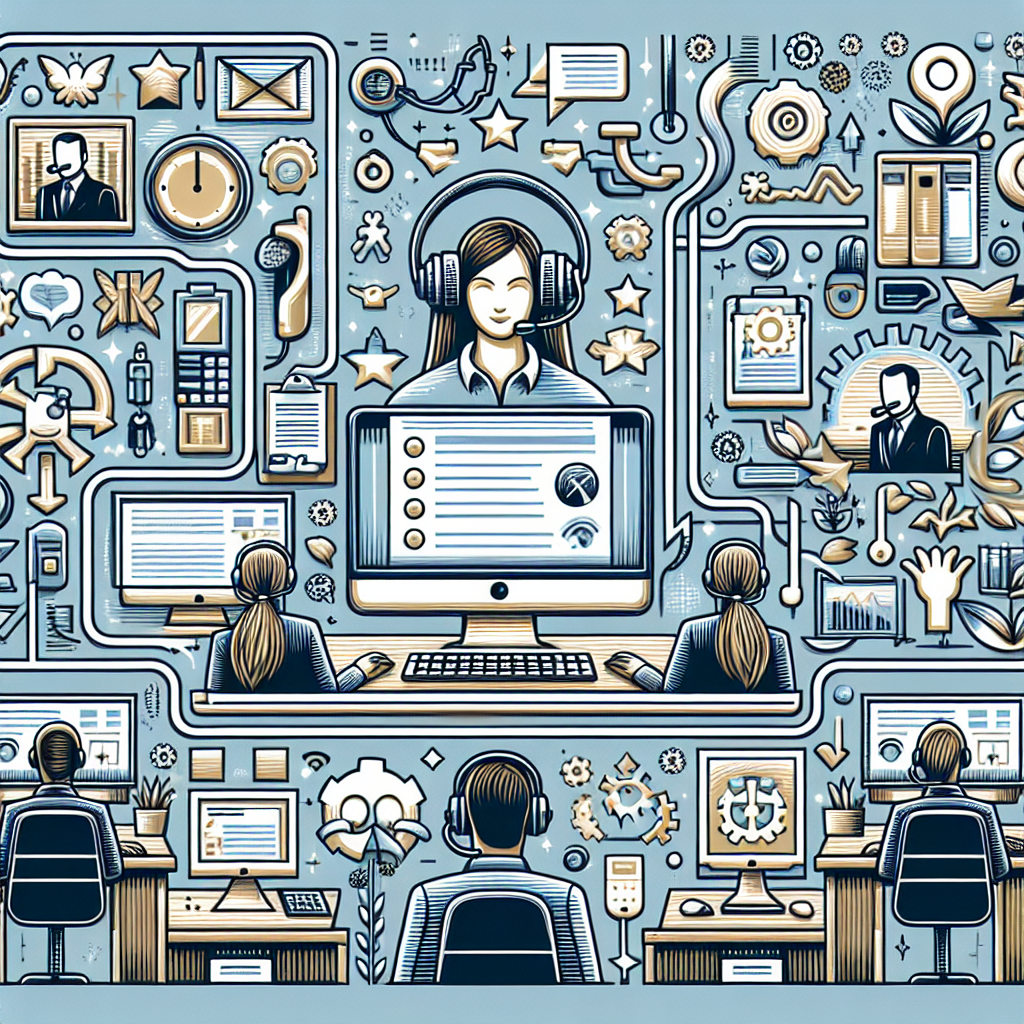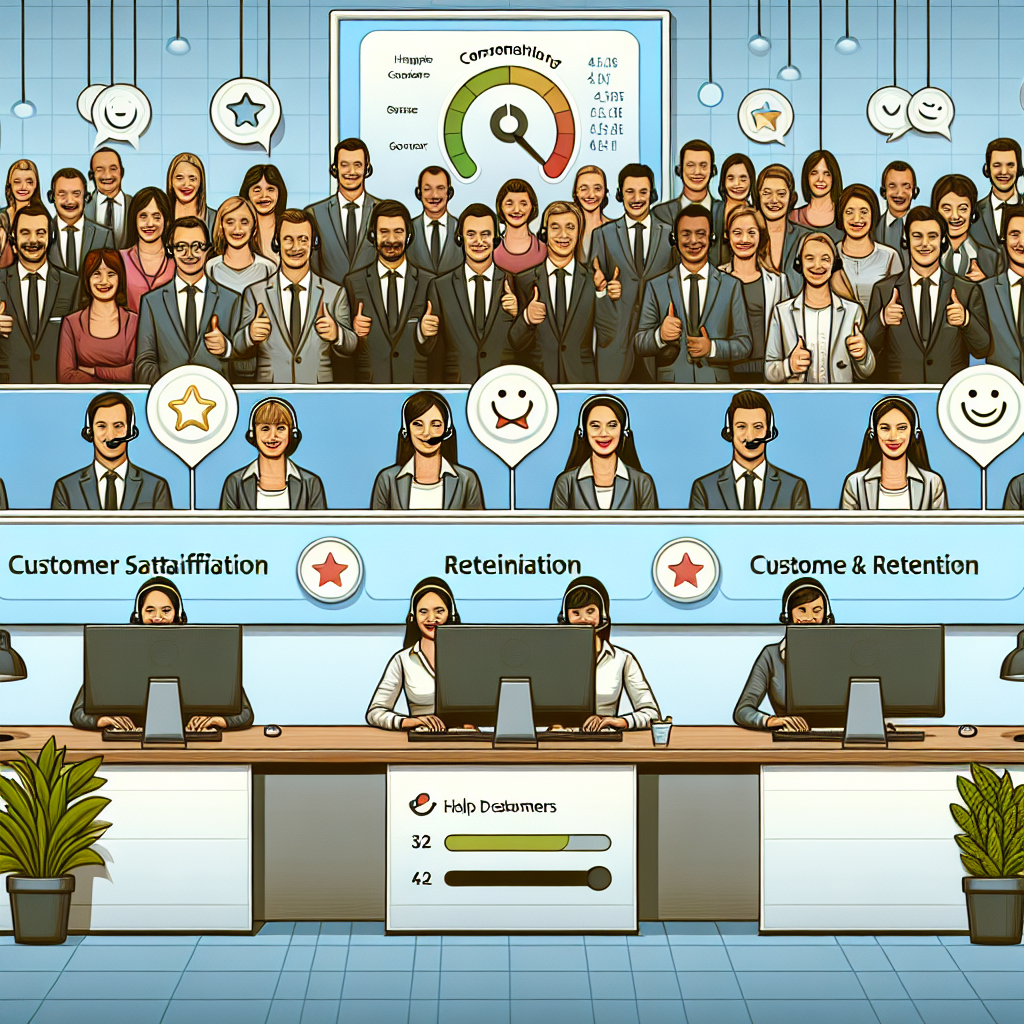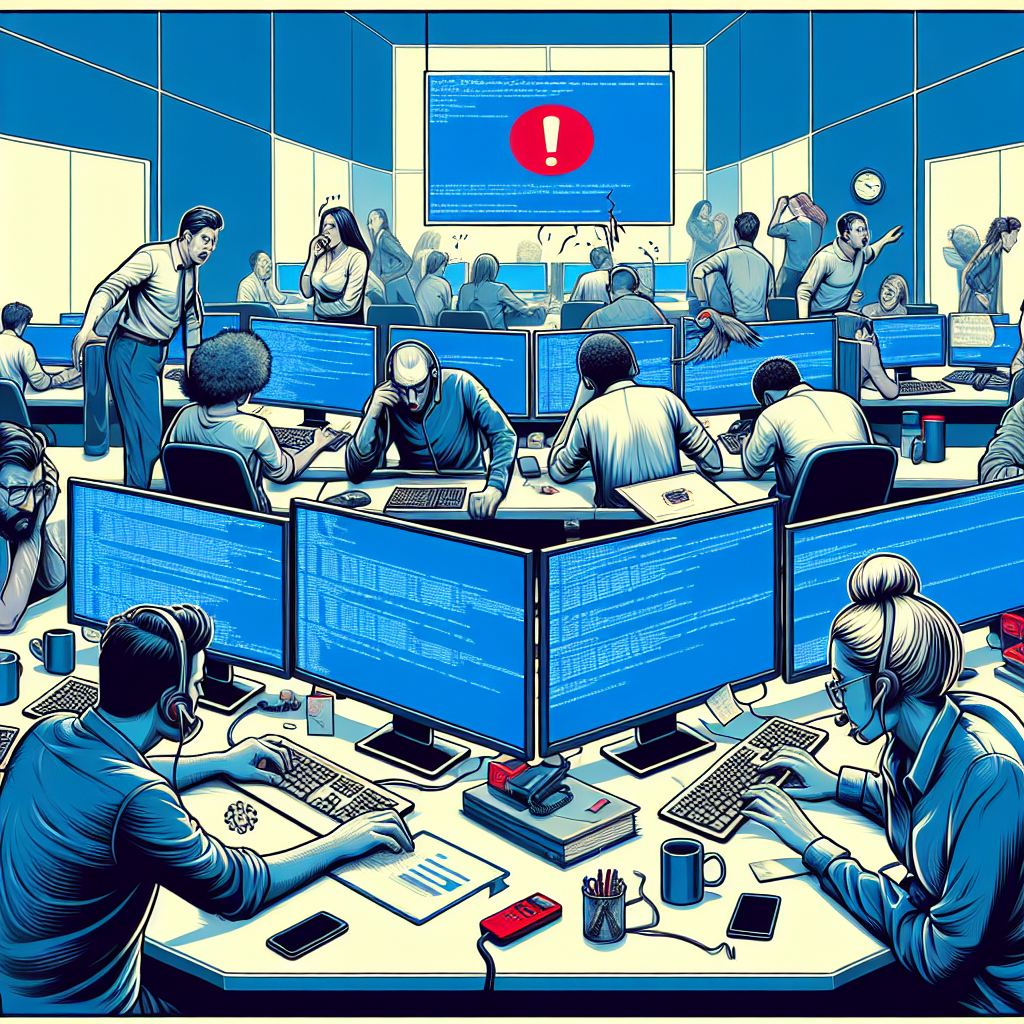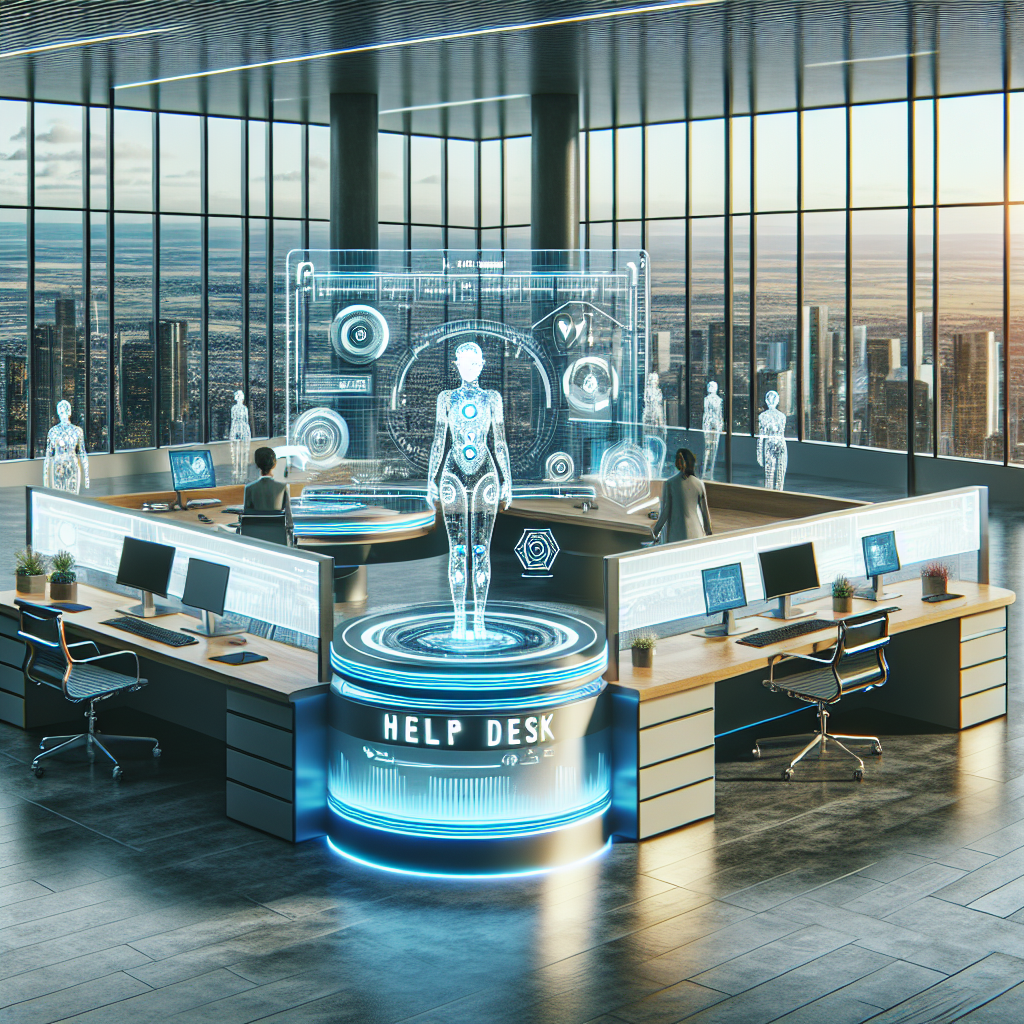Your cart is currently empty!
Tag: Desk

Best Practices for Training and Developing Help Desk Staff
In today’s fast-paced business environment, having a skilled and knowledgeable help desk staff is crucial for providing excellent customer service and ensuring smooth operations. Training and developing help desk staff is essential to ensuring they have the necessary skills and knowledge to effectively support customers and resolve issues in a timely manner. Here are some best practices for training and developing help desk staff:1. Provide comprehensive training: When onboarding new help desk staff, it is important to provide comprehensive training that covers all aspects of their role. This includes technical training on the systems and software they will be supporting, as well as soft skills training on communication, problem-solving, and customer service.
2. Offer ongoing training and development opportunities: Training should not stop after the initial onboarding process. It is important to offer ongoing training and development opportunities to help desk staff so they can continue to improve their skills and stay up-to-date on the latest technologies and best practices.
3. Encourage continuous learning: Encourage help desk staff to take ownership of their own learning and development by seeking out additional training opportunities, such as online courses, webinars, or conferences. Providing a budget for professional development can also help staff stay motivated and engaged.
4. Provide mentorship and coaching: Pairing new help desk staff with experienced mentors can help them learn from their peers and gain valuable insights into the role. Regular coaching sessions can also provide feedback and guidance on areas for improvement.
5. Foster a supportive work environment: Creating a supportive and collaborative work environment can help help desk staff feel motivated and engaged in their role. Encourage teamwork, open communication, and a positive attitude towards learning and development.
6. Measure performance and provide feedback: Regularly measure the performance of help desk staff through metrics such as response times, customer satisfaction scores, and issue resolution rates. Provide feedback on areas for improvement and recognize achievements to motivate staff to continue to excel.
7. Encourage certification and accreditation: Encouraging help desk staff to pursue relevant certifications and accreditations can help them develop specialized skills and demonstrate their expertise in the field. This can also enhance their credibility and career prospects.
In conclusion, training and developing help desk staff is essential for ensuring they have the skills and knowledge to provide excellent customer service and support. By following these best practices, organizations can empower their help desk staff to excel in their roles and contribute to the overall success of the business.

The Importance of a Well-Managed Help Desk
A well-managed help desk is an essential component of any successful business operation. It serves as the frontline of customer support, providing assistance to users who encounter issues with products or services. A help desk that is well-organized and efficient can greatly enhance the overall customer experience and create a positive impression of the company.One of the key benefits of a well-managed help desk is improved customer satisfaction. When customers know they can rely on prompt and effective support when they encounter a problem, they are more likely to have a positive perception of the company and its products or services. This can lead to increased customer loyalty and repeat business, as satisfied customers are more likely to return for future purchases.
A well-managed help desk can also help to reduce customer frustration and complaints. By providing timely and accurate assistance, help desk agents can help customers resolve issues quickly and efficiently, preventing them from becoming aggravated and seeking out alternative solutions. This can lead to a decrease in negative feedback and complaints, ultimately improving the company’s reputation and brand image.
In addition, a well-managed help desk can also contribute to increased productivity within the organization. By streamlining support processes and implementing efficient ticketing systems, help desk agents can handle a larger volume of requests in a shorter amount of time. This can help to reduce the overall workload on support staff and allow them to focus on more complex and high-priority issues.
Furthermore, a well-managed help desk can also help to identify and address recurring issues and trends. By tracking and analyzing customer support requests, help desk managers can identify common problems and implement proactive solutions to prevent them from occurring in the future. This can help to improve product quality and customer satisfaction, ultimately leading to a more successful business operation.
Overall, the importance of a well-managed help desk cannot be overstated. It plays a crucial role in providing support to customers, resolving issues in a timely manner, and improving overall customer satisfaction. By investing in a well-organized and efficient help desk, businesses can enhance their reputation, increase customer loyalty, and drive success in the competitive marketplace.

Best Practices for Streamlining Help Desk Operations
A help desk is an essential component of any organization, providing support and assistance to employees and customers when they encounter technical issues. However, managing a help desk can be a complex and time-consuming task. In order to streamline help desk operations and ensure efficient and effective service delivery, it is important to implement best practices that can help optimize workflow and maximize productivity. Here are some best practices for streamlining help desk operations:1. Implement a ticketing system: A ticketing system is a centralized platform that allows help desk agents to track, prioritize, and manage customer requests. By implementing a ticketing system, help desk agents can easily assign tickets to the appropriate team members, monitor ticket status, and ensure timely resolution of issues.
2. Provide self-service options: Offering self-service options such as knowledge bases, FAQs, and troubleshooting guides can help reduce the number of incoming support requests and empower users to resolve common issues on their own. This can help free up help desk agents to focus on more complex and critical tasks.
3. Standardize processes: Standardizing help desk processes and procedures can help improve efficiency and consistency in service delivery. By establishing clear guidelines for ticket escalation, issue resolution, and communication protocols, help desk agents can work more efficiently and effectively.
4. Utilize automation tools: Automation tools such as chatbots, AI-powered solutions, and automated workflows can help streamline help desk operations by handling routine tasks, providing instant responses to common queries, and automating repetitive processes. This can help reduce response times, improve customer satisfaction, and increase overall productivity.
5. Offer training and development opportunities: Providing ongoing training and development opportunities for help desk agents can help improve their technical skills, customer service abilities, and problem-solving capabilities. Investing in professional development can help enhance the quality of service provided by the help desk team and ensure they are equipped to handle a wide range of issues.
6. Monitor performance metrics: Monitoring key performance metrics such as average response time, first call resolution rate, customer satisfaction scores, and ticket resolution time can help identify areas for improvement and track the effectiveness of help desk operations. By regularly analyzing performance data, help desk managers can make informed decisions to optimize workflow and enhance service delivery.
In conclusion, implementing best practices for streamlining help desk operations can help improve efficiency, productivity, and customer satisfaction. By utilizing tools, processes, and training opportunities, help desk managers can optimize workflow, enhance service delivery, and ensure the smooth operation of the help desk. By following these best practices, organizations can effectively manage their help desk operations and provide timely and effective support to their employees and customers.

Empowering Your Help Desk Team: Strategies for Success
Empowering Your Help Desk Team: Strategies for SuccessA help desk team is the backbone of any successful organization. They are the first point of contact for customers who are seeking assistance with products or services, and they play a crucial role in ensuring customer satisfaction. Empowering your help desk team is essential for ensuring they are able to effectively address customer needs and provide a positive experience. Here are some strategies for empowering your help desk team for success:
1. Provide training and support: One of the most important ways to empower your help desk team is by providing them with the necessary training and support. This includes both technical training on the products or services they are supporting, as well as training on customer service skills. By investing in training for your help desk team, you are equipping them with the knowledge and skills they need to effectively assist customers.
2. Encourage autonomy: Empower your help desk team by giving them the autonomy to make decisions and solve problems on their own. Encouraging autonomy can help boost confidence and morale, and can result in more efficient and effective problem-solving. Trusting your help desk team to make decisions can also help foster a sense of ownership and responsibility.
3. Provide resources and tools: In order for your help desk team to be successful, they need access to the right resources and tools. This may include software for tracking customer inquiries, knowledge bases for troubleshooting common issues, and communication tools for collaborating with team members. By providing your help desk team with the resources they need, you are setting them up for success.
4. Recognize and reward success: Recognizing and rewarding the hard work and achievements of your help desk team is important for boosting morale and motivation. Whether it’s through verbal praise, bonuses, or other incentives, acknowledging the efforts of your help desk team can help keep them engaged and motivated to continue providing excellent customer service.
5. Foster a positive work culture: Creating a positive work culture is essential for empowering your help desk team. This includes promoting open communication, fostering a sense of teamwork, and providing opportunities for growth and development. By creating a supportive and positive work environment, you can empower your help desk team to excel and achieve success.
Empowering your help desk team is key to ensuring they are able to effectively support customers and provide a positive experience. By providing training and support, encouraging autonomy, providing resources and tools, recognizing and rewarding success, and fostering a positive work culture, you can empower your help desk team for success.

The Role of Help Desk in Customer Satisfaction and Retention
In today’s highly competitive business landscape, customer satisfaction and retention have become critical factors for the success of any organization. One of the key elements in ensuring both customer satisfaction and retention is the role of the help desk.The help desk serves as the first point of contact for customers seeking assistance with products or services. It plays a crucial role in addressing customer queries, resolving issues, and providing timely and effective solutions. By offering a dedicated support system, the help desk helps in building trust and loyalty among customers, ultimately leading to higher satisfaction levels.
One of the primary ways in which the help desk contributes to customer satisfaction is by providing prompt and personalized assistance. Customers value quick responses to their queries and appreciate when their issues are resolved in a timely manner. A well-functioning help desk ensures that customers receive the assistance they need when they need it, leading to a positive customer experience.
Moreover, the help desk also plays a vital role in ensuring consistent and high-quality customer service. By following standardized processes and protocols, help desk agents can provide a consistent level of service to all customers, regardless of the nature of their query or issue. This consistency helps in building trust and credibility among customers, leading to increased satisfaction levels.
Another important aspect of the help desk’s role in customer satisfaction is its ability to gather valuable feedback from customers. By interacting with customers on a regular basis, help desk agents can collect feedback on products, services, and overall customer experience. This feedback is invaluable in identifying areas for improvement and making necessary changes to enhance customer satisfaction.
In addition to customer satisfaction, the help desk also plays a crucial role in customer retention. By providing exceptional customer service and resolving issues effectively, the help desk helps in building long-term relationships with customers. Satisfied customers are more likely to remain loyal to a brand and continue using its products or services, leading to increased customer retention rates.
Overall, the role of the help desk in customer satisfaction and retention cannot be underestimated. By providing prompt and personalized assistance, ensuring consistent and high-quality service, and gathering valuable feedback, the help desk plays a crucial role in enhancing customer satisfaction and driving customer retention. Organizations that prioritize their help desk function are more likely to build strong relationships with customers and achieve long-term success in today’s competitive business environment.

5 Common Help Desk Mistakes to Avoid
A help desk is an essential component of any business, providing support and assistance to customers and employees. However, there are common mistakes that can hinder the effectiveness of a help desk and lead to frustration for both customers and support staff. In this article, we will discuss five common help desk mistakes to avoid in order to provide better service and improve overall customer satisfaction.1. Lack of Communication
One of the most common mistakes that help desks make is failing to communicate effectively with customers. This can include not providing timely updates on the status of a ticket, not keeping customers informed of any potential delays, or not following up after an issue has been resolved. Effective communication is key to building trust with customers and ensuring that their needs are being met.
To avoid this mistake, help desk staff should make it a priority to keep customers informed every step of the way. This can include setting clear expectations for response times, providing regular updates on the status of a ticket, and following up with customers after an issue has been resolved to ensure their satisfaction.
2. Ignoring Feedback
Another common mistake that help desks make is ignoring feedback from customers. Customer feedback is a valuable tool for identifying areas of improvement and addressing any issues that may be hindering the effectiveness of the help desk. Ignoring feedback can lead to recurring problems and dissatisfied customers.
To avoid this mistake, help desk staff should actively seek out feedback from customers and take it seriously. This can include conducting surveys, monitoring customer reviews, and soliciting feedback directly from customers. By listening to customer feedback and making necessary improvements, help desks can enhance their performance and improve customer satisfaction.
3. Failing to Prioritize Tickets
Help desks often receive a high volume of tickets, ranging from simple inquiries to urgent technical issues. Failing to prioritize tickets can result in delays in resolving critical issues and can lead to frustration for customers. It is important for help desk staff to prioritize tickets based on their urgency and impact on the customer.
To avoid this mistake, help desk staff should establish a clear system for prioritizing tickets. This can include categorizing tickets based on their severity, setting response time goals for each category, and ensuring that urgent issues are addressed promptly. By prioritizing tickets effectively, help desks can ensure that critical issues are resolved in a timely manner and that customers receive the support they need.
4. Lack of Training
Effective help desk support requires knowledgeable and well-trained staff. Failing to provide adequate training can result in staff members being ill-equipped to handle customer inquiries and technical issues. This can lead to longer resolution times, increased frustration for customers, and a decline in overall customer satisfaction.
To avoid this mistake, help desks should invest in training programs for their staff. This can include technical training on the systems and software used by the help desk, as well as customer service training on effective communication and problem-solving skills. By providing ongoing training and support for help desk staff, businesses can ensure that their support team is equipped to provide top-notch service to customers.
5. Neglecting Documentation
Proper documentation is essential for a help desk to operate efficiently and effectively. Neglecting to document customer interactions, issue resolutions, and troubleshooting steps can lead to confusion, duplication of efforts, and delays in resolving issues. It is important for help desk staff to maintain accurate and up-to-date documentation to ensure that all team members have access to the information they need to provide support.
To avoid this mistake, help desk staff should make it a priority to document all customer interactions, issue resolutions, and troubleshooting steps. This can include using a ticketing system to track and update tickets, maintaining a knowledge base of common issues and solutions, and documenting any changes or updates made to systems or software. By prioritizing documentation, help desks can streamline their operations, improve efficiency, and provide better support to customers.
In conclusion, avoiding these common help desk mistakes can help businesses provide better service, improve customer satisfaction, and enhance the overall effectiveness of their support team. By prioritizing communication, feedback, ticket prioritization, training, and documentation, help desks can optimize their operations and deliver top-notch support to customers.

The Future of Help Desk: Trends and Technologies to Watch
As technology continues to advance at a rapid pace, the future of help desks is evolving as well. With the rise of artificial intelligence, automation, and other emerging technologies, help desks are becoming more efficient, responsive, and user-friendly than ever before. In this article, we will explore some of the key trends and technologies that are shaping the future of help desks.One of the most significant trends in the world of help desks is the increasing use of artificial intelligence (AI) and machine learning. AI-powered chatbots are now being used to provide instant assistance to customers, answer common questions, and even troubleshoot technical issues. These chatbots can quickly analyze customer inquiries, provide relevant information, and direct users to the appropriate resources for further assistance. This not only helps to improve customer satisfaction but also allows help desk agents to focus on more complex issues that require human intervention.
Another trend that is shaping the future of help desks is the growing focus on self-service options. Many companies are now offering self-service portals and knowledge bases where customers can find answers to their questions and troubleshoot common issues on their own. By providing customers with the tools and resources they need to resolve issues independently, companies can reduce the volume of incoming support requests and improve overall efficiency.
Automation is also playing a key role in the future of help desks. By automating routine tasks such as ticket triaging, routing, and escalation, help desk agents can spend more time focusing on higher-value activities that require human expertise. Automation can also help to streamline workflows, reduce response times, and improve overall service quality.
In addition to AI, self-service options, and automation, other technologies such as augmented reality (AR) and virtual reality (VR) are also starting to make their way into the world of help desks. AR and VR technologies can be used to provide remote assistance, guide customers through troubleshooting processes, and even offer virtual training sessions. These immersive technologies can help to enhance the customer experience, improve problem-solving capabilities, and reduce the need for on-site support visits.
Overall, the future of help desks is bright, with the adoption of AI, automation, self-service options, and other emerging technologies helping to drive innovation and improve customer support. By staying ahead of these trends and embracing new technologies, companies can position themselves for success in the increasingly digital and fast-paced world of customer service.

The Importance of Effective Help Desk Management
Help desk management plays a crucial role in ensuring smooth and efficient operations within an organization. It serves as the central point of contact for employees and customers who require assistance with technical issues, troubleshooting, and general inquiries. Effective help desk management can significantly impact overall business productivity, customer satisfaction, and employee morale.One of the key reasons why effective help desk management is so important is that it helps to minimize downtime and technical issues. When employees encounter problems with their computers, software, or other technology tools, a well-managed help desk can provide timely support and solutions to get them back up and running quickly. This can prevent disruptions in workflow and ensure that employees are able to perform their tasks without unnecessary delays.
Additionally, a well-managed help desk can improve customer satisfaction by providing prompt and efficient support to customers who have questions or encounter issues with products or services. By offering timely assistance and resolving problems in a professional manner, help desk staff can help to build trust and loyalty with customers, ultimately leading to increased customer retention and positive word-of-mouth referrals.
Furthermore, effective help desk management can also contribute to better employee morale and job satisfaction. When employees know that they have access to reliable support and assistance when they encounter technical issues, they are more likely to feel supported and valued by their organization. This can lead to increased productivity, job satisfaction, and overall employee engagement.
In order to achieve effective help desk management, organizations should invest in the right technology tools, training, and resources for their help desk staff. This includes implementing a user-friendly ticketing system, providing ongoing training and development opportunities for staff members, and maintaining clear communication channels for reporting and resolving technical issues.
Overall, effective help desk management is essential for ensuring smooth operations, minimizing downtime, and providing excellent customer service. By investing in the right resources and support for their help desk staff, organizations can improve productivity, customer satisfaction, and employee morale, ultimately leading to greater success and growth in the long run.

10 Tips for Improving Your Help Desk Support
Having a solid help desk support system in place is crucial for any business, as it serves as the first point of contact for customers seeking assistance with their products or services. To ensure that your help desk support team is operating at its best, here are 10 tips for improving your help desk support:1. Provide thorough training: Make sure that all help desk support staff receive comprehensive training on the products or services offered by your company, as well as on how to effectively troubleshoot and resolve customer issues.
2. Foster a customer-centric culture: Encourage help desk support staff to always prioritize the needs and satisfaction of customers, and to go above and beyond to provide exceptional service.
3. Implement a ticketing system: Utilize a ticketing system to track and prioritize customer requests, ensuring that each inquiry is addressed in a timely manner.
4. Monitor performance metrics: Keep track of key performance indicators such as response time, resolution time, and customer satisfaction rates, and use this data to identify areas for improvement.
5. Encourage teamwork: Foster a collaborative environment among help desk support staff, encouraging them to share knowledge and best practices to better serve customers.
6. Offer multi-channel support: Provide customers with multiple avenues for seeking help, such as phone, email, live chat, and social media, to accommodate their preferences.
7. Automate repetitive tasks: Implement automation tools to streamline common help desk support tasks, freeing up staff to focus on more complex issues.
8. Provide ongoing training and development: Keep help desk support staff up-to-date on new products or services, as well as on the latest tools and technologies to enhance their skills.
9. Solicit feedback from customers: Regularly gather feedback from customers about their experiences with your help desk support team, and use this input to make necessary improvements.
10. Continuously improve processes: Regularly review and refine your help desk support processes to ensure that they are efficient, effective, and aligned with the needs of customers.
By implementing these 10 tips, you can enhance the effectiveness of your help desk support team and provide customers with the high-quality assistance they deserve. Remember, happy customers are loyal customers, so investing in your help desk support system is essential for the success of your business.

The Future of Help Desk: Trends to Watch in 2021
As technology continues to evolve at a rapid pace, so too does the world of help desk support. In 2021, there are several key trends emerging that are shaping the future of help desk services. From AI-powered chatbots to remote support options, here are some of the top trends to watch in the world of help desk support.One of the biggest trends in help desk support is the rise of AI-powered chatbots. These virtual assistants use artificial intelligence to provide instant responses to customer inquiries, helping to streamline the support process and reduce the burden on human agents. AI chatbots are becoming increasingly sophisticated, able to handle a wide range of customer queries and issues, making them an invaluable tool for help desk teams.
Another trend to watch in 2021 is the increasing emphasis on remote support options. With more and more people working from home, help desk teams are finding new ways to provide support to customers and employees who are not physically in the office. This includes tools like remote desktop support and video conferencing, which allow help desk agents to troubleshoot issues and provide assistance from any location.
In addition to AI chatbots and remote support options, help desk teams are also focusing on improving the overall customer experience. This includes providing more personalized support to customers, using data analytics to identify common issues and trends, and implementing self-service options to empower customers to find solutions on their own. By focusing on the customer experience, help desk teams can build stronger relationships with customers and improve overall satisfaction levels.
Lastly, cybersecurity is a major concern for help desk teams in 2021. With cyber threats on the rise, help desk teams are investing in training and tools to help them identify and respond to security incidents quickly and effectively. This includes implementing multi-factor authentication, encryption, and other security measures to protect customer data and prevent breaches.
In conclusion, the future of help desk support is bright, with new technologies and trends shaping the way that support teams interact with customers. By embracing AI chatbots, remote support options, and a focus on the customer experience, help desk teams can provide better, more efficient support to their customers in 2021 and beyond.
